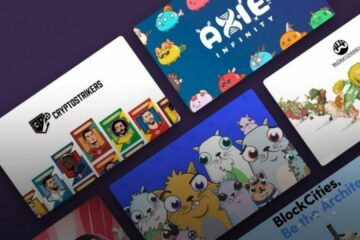If you think you’re making thousands of dollars just by creating a JPEG of your latest canvas NFT, you’ll have to wait patiently. If some or some have made a fortune, it is mainly because of the speculation related to the cryptocurrencies used on these blockchains and the sudden and frenzied interest in NFTs.
This new technology nevertheless contains interesting elements for different groups of artists. Who says traceability means greater respect for copyright and more royalties. Works that can be easily shared in digital format such as music, films and images could be better protected and bring more royalties to rights holders.
In the case of digital visual artists, NFTs could even meet a long-standing demand from the arts community.
Resale right and NFT
Visual artists have long called for a revision of the Copyright Act to introduce a resale right. The introduction of this right was even recommended by the House of Commons Standing Committee on Canadian Heritage.
This type of copyright, which does not exist in Canadian law, would provide artists with a share of the royalties on the resale of their works, particularly in the context of auctions.
Enforcement of this resale right could be facilitated by NFTs and other blockchain-based technologies. By pairing an NFT, the artist will know who their work is being sold to and for what amount, and can schedule and automate a royalty percentage on those sales.
Without an effective copyright law to uphold their copyright, digital artists would have the ability to enforce copyright on their own. Small consolation limited only to a sub-market.
Risks to moral rights
While this technology offers the possibility of tracing a work and maintaining a direct link with the artists, NFTs and blockchains are imperfect to respect the right of attribution, a moral right of primary importance for creators.
Since blockchains are intended to be decentralized and free from third-party control, there is no authority to confirm the identity of people using the blockchain. A person can therefore easily appropriate a digital document by associating an NFT with their name.
In March, the Global Art Museum group associated NFTs with scans of works belonging to different museums without their permission. While Global Art Museum had no bad intentions in launching this project, many saw this maneuver as a way to illegally appropriate the works.
NFT and blockchain: a flash in the pan for artists?
These new technologies are full of promise. The intellectual property community follows developments very closely and is even involved in reflection.
In recent years, non-fungible tokens (NFTs) have given internet collectors a new way to spend their cryptocurrencies and collect unique assets. NFTs are digital tokens attached to an asset that give the buyer ownership of the coin. With some NFTs selling for millions of dollars, new NFT brokers are joining the market every day to take part in this booming industry. Open a digital wallet today, and use this guide to start raising your own. collection of NFT.
What is NFT?
NFTs are assets with a unique code that makes them unique in their kind. Since they are not fungible (or non-negotiable), you cannot exchange one NFT for another. For example, a penny is a fungible token because it is not unique – you can trade it for almost any other penny without seeing a change in value. On the other hand, a painting like the Mona Lisa is not fungible because it is irreplaceable.
Likewise, each NFT represents a unique asset with its own value. When you buy an NFT, you are buying full ownership of the part. This means that you can keep it, sell it or display it in your online collection. Others can view the file, but you have full ownership and distribution rights. Depending on how the NFT is organized, the original artist may receive a portion of the proceeds from the sale of your property.
While most NFTs come directly from artists and individuals, big brands like Taco Bell have sold NFTs for thousands of dollars. These companies often donate the proceeds to charity.
What makes NFT worth?
NFTs are valuable because they give you full ownership of the work. In fact, it’s like buying an original Georgia O’Keefe painting. Other people can download the file or view the image, but they do not own the table itself. Like traditional paintings by famous artists, there is only one NFT, and only one person can own it at a time.
When you own an NFT, you own all the value that comes with it. You can’t sell a screenshot of the artwork you own, but you can sell the real NFT for thousands or millions of dollars. You also get “bragging rights” to any meme, video, painting, or image you purchased. It carries a lot of weight if you own a work by a famous artist or a viral video that’s been around for a decade.
Since anyone can view the NFT records, you won’t have to prove your ownership to anyone. You are the certified owner of your NFT until you decide to sell it to another buyer. Some people prefer to display their NFTs in public, while others keep them in private collections.
Are NFT an investment?
Ultimately, it’s hard to predict how your NFT will perform in the future. As each NFT is unique in its kind, you probably won’t have to deal with over-saturation in the market. However, market trends and new technologies can affect the value of your NFT when you bring it back to market. Some people bought NFTs for a few thousand dollars and resold them at a considerable profit, while others had to accept a price cut when they sold their NFTs.
Many brokers view NFTs as an investment, regardless of the coin or topic. Like cryptocurrencies, NFTs represent the future of online commerce – and as demand increases, prices can soar. Further advancements could make NFTs even more profitable and valuable. Nothing is guaranteed, but their non-fungible nature makes NFTs more valuable than tradable tokens.



0 Comments